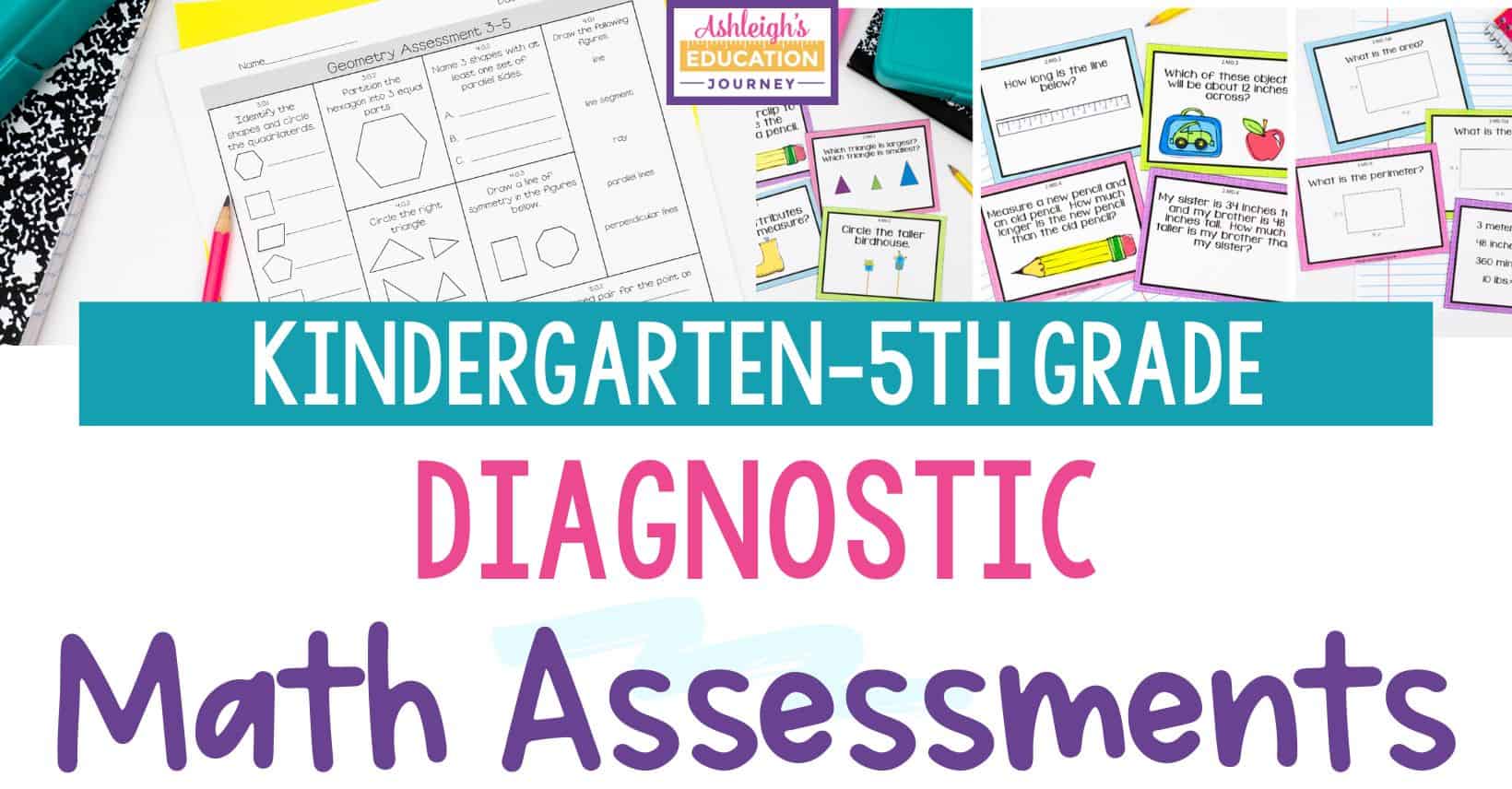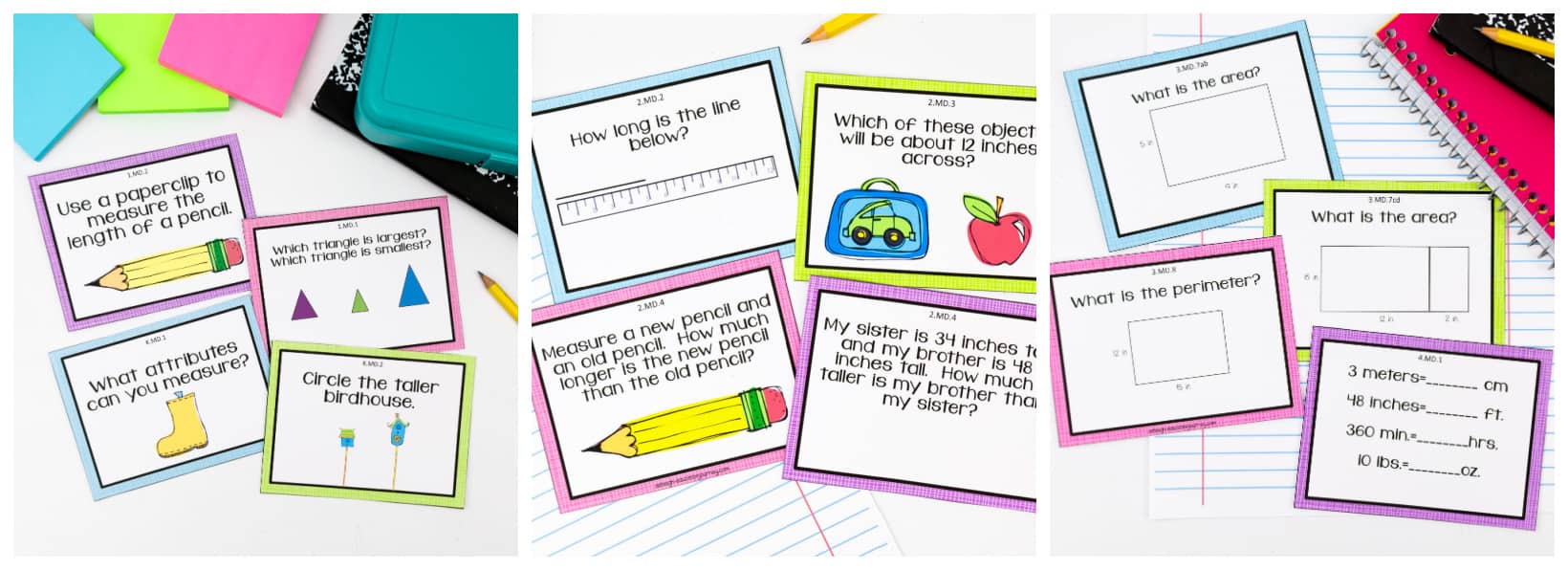
It’s no secret that I love teaching math. As much as I enjoy teaching math, I’ve always had trouble seeing the “big picture” as far as where my students have been and where they are going. Unlike in reading (DRA, DIBELS, STAR, etc), whenever I get a new group of students, I don’t know anything about their history with math.
I wanted/needed a comprehensive assessment for all math standards. I’d been on the lookout for something that would work for over a year, and I never found exactly what I had been looking for, so I got to work.
I knew this would be a big project, but I had no idea just how big it would become. I started by creating K-5 checklists that were organized by concept. I wanted a way to look at all standards for a particular concept on one piece of paper. I made checklists for place value, addition & subtraction, measurement & data, geometry, multiplication & division, and fractions. This is so useful, because you can easily see what students have already been taught and what will be expected of them the following years.


Even with the checklist, it didn’t take much for me to recognize that I had no way of knowing which standards my students have already mastered. In a perfect world, all students come to the next grade level having mastered all of their previous year’s standards, but in reality we have students above, on, and below our grade level standards. It’s just how it is.
I wanted an easy way to asses students that allowed me to see which of the previous standards they had already mastered. To provide that information, I created a K-2 and 3-5 assessment for place value, addition & subtraction, measurement & data, and geometry. I also created a 3-5 assessment for multiplication, division and fractions. In the images below, you can see below how the assessments are organized, so that it will be useful for any grade level.


After getting feedback from other teachers, I’ve also created a set of task cards for each of the written assessment. This version would be great if you are working with younger students or students who may assess better orally or in a one-on-one setting. I’ve organized the task cards by concept and have labeled each task card with the standard.

You can store assessment task cards on metal rings. This will help keep the cards organized.

The way you use these assessments will largely depend on the grade level you teach. You could use it as a pretest for all students or as a break down of skills for your EIP or RTI students.
I used this diagnostic assessment with my third graders. I plan to gave the place value, addition & subtraction, measurement & data, and geometry K-2 assessments to all students as a pretest. This helped me to see what prior knowledge my students have on these concepts. I used that information to plan my instruction and to find possible misconceptions that need to be addressed. If you’re a second grade teacher, you may want to have students skip the third grade questions or use them to see which students may need a little acceleration. If you’re a fourth or fifth grade teacher, you may only want to give your students the 3-5 version and only use the K-2 versions with students who are having difficulty with the 3-5 concepts. This will give you a detailed breakdown of what prerequisite skills need to be addressed before your students can meet their grade level expectations.


